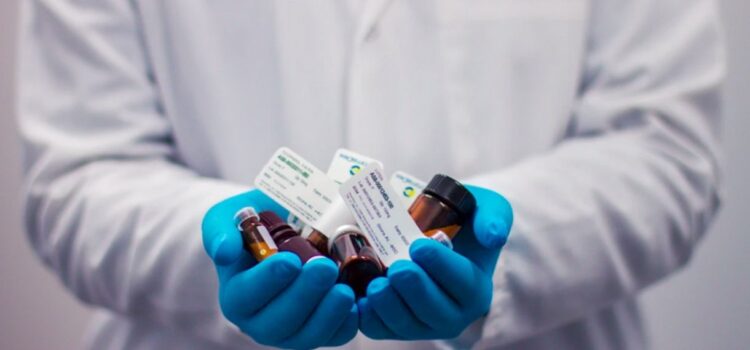

This article is an excerpt from the Shortform book guide to "Mountains Beyond Mountains" by Tracy Kidder. Shortform has the world's best summaries and analyses of books you should be reading.
Like this article? Sign up for a free trial here .
What are the causes of multi-drug resistant tuberculosis? How does it develop and can it be treated?
Paul Farmer started investigating multi-drug resistant tuberculosis in Lima, Peru. He found out that MDR can be prevented if patients are treated with different antibiotic drugs after their first TB treatment round. Otherwise, bacteria will grow resistant to those antibiotics.
Read more to learn about multi-drug resistant tuberculosis, its causes, and how Paul Farmer convinced the WHO to implement TB MDR treatment program.
Causes of Multi-Drug Resistant Tuberculosis
Tuberculosis tends to affect the poor, and multi-drug resistant tuberculosis is especially prevalent when patients receive incomplete TB MDR treatment.
One way MDR can develop is if a patient doesn’t complete a course of antibiotics. Some of the tuberculosis bacteria can survive, leading to complications or death. Or, if patients go through one course of antibiotics but still aren’t cured, subsequent treatment with the same antibiotics could cause them to develop MDR.
In some cases, MDR tuberculosis develops as a result of improper treatment.
Paul Farmer started investigating the development of drug-resistant tuberculosis strains in Lima, Peru. There, tuberculosis patients underwent directly observed treatment short-course chemotherapy, or DOTS. This meant a health provider watched patients while they took the antibiotics. If a patient wasn’t cured during the first round of DOTS, then they were treated again with the same antibiotics plus an additional one.
Despite this program, there were ten patients in his hospital who weren’t properly cured, which pointed to drug-resistant tuberculosis strains in the community.
Because the patients were observed taking the medicine, failure to complete the treatment couldn’t be the cause of drug resistance. The quality of the drugs had been certified, too.
The problem was that, after the first round of DOTS failed to cure patients, they underwent a second round of treatment with some of the same antibiotics, and only ended up sicker because the bacteria were resistant to one or more of the drugs. If the doctors had realized this after the first round and tried treating the patient with different antibiotics, they could have prevented the development of multi-drug resistant tuberculosis.
The Case for TB MDR Treatment
Farmer gave a talk at a convening of lung specialists, which included WHO personnel, to argue the case for treating MDR tuberculosis. He wanted to dispel the myth that treating MDR was not cost-effective. He used an example of a patient with MDR in Texas who spread it to 9 family members. It cost $1 million to treat the whole family. This example demonstrated that patients with multi-drug resistant tuberculosis aren’t less contagious, and it’s more cost-effective to treat one person than multiple.
He also argued that continuing to rely on the DOTS regimen to treat patients with multi-drug resistant tuberculosis would amplify drug resistance.
Later, Farmer presented these ideas to the WHO directly, convincing the director of its TB program to implement MDR treatment that went beyond DOTS to treat both regular and drug-resistant patients. The director called it DOTS-plus.
TB Treatment for Russian Prisoners
Farmer also traveled to Russia to help negotiate the terms of a World Bank loan to treat prisoners with tuberculosis. At the time, Russian prisoners’ risk of catching TB was 40 to 50 times higher than that of the rest of the country, and one-third of prisoners had multidrug-resistant tuberculosis (MDR). In some instances, people were infected while waiting years in prison before sentencing, or were released while still battling the disease, furthering its spread.
Russian prisoners with TB were already receiving treatment thanks to funding from George Soros, a wealthy businessman and philanthropist. However, just like Peru’s initial plan, Soros’s plan focused exclusively on treating TB patients, not MDR patients. If the patients did not recover—if they had drug-resistance—they’d be given hospice treatment to make their deaths easier.
Farmer criticized the plan, saying it wouldn’t help decrease rates of TB or MDR in the country, and Soros enlisted his help to develop a new one. Soros suggested negotiating a loan from the World Bank to support such efforts. Farmer hoped that creating an effective TB and MDR treatment program in Russia would bring attention to the plight of the poor around the world.
Terms of the Loan
Discussion of the loan terms centered on what portion of the funding should go to treat Russia’s prisoners versus non-prisoners. Farmer thought that since the prisoners were at higher risk, and could endanger the greater population if left untreated, half of the money should go to treating them. He’d spent the better part of a year meeting with World Bank leaders, trying to sway them.
But most of the World Bank negotiators thought that only 20 percent of the loan should go toward treating prisoners and the rest should fund treatment for the general population. They also didn’t like Farmer’s proposal to give prisoners with TB more food. But one of the negotiators approached Farmer privately and told him to ask for funding for vitamins for the prisoners, which could be used for food later instead. The negotiators agreed to the new proposal, which ultimately gave extra food and 50 percent of the loan to prisoners.

———End of Preview———
Like what you just read? Read the rest of the world's best book summary and analysis of Tracy Kidder's "Mountains Beyond Mountains" at Shortform .
Here's what you'll find in our full Mountains Beyond Mountains summary :
- How Dr. Paul Farmer came to operate a hospital in Haiti
- What the connection is between sorcery and tuberculosis
- How Dr. Farmer's organization is a model for treating patients in poor countries






